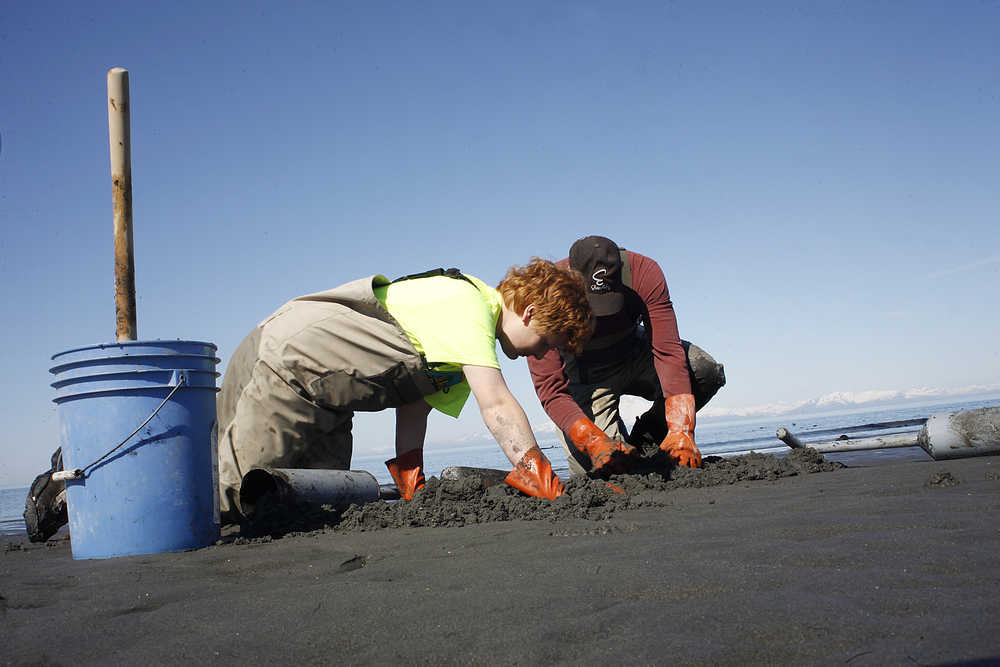Clams on the eastside Cook Inlet beaches will remain off-limits for sport and personal use clamming in 2016 after a 2015 survey showed continued low numbers.
It is the second consecutive year for clamming to be closed on all eastside beaches, but restrictions have been in place since 2013 when Alaska Department of Fish and Game biologists first decreased the bag and possession limits, then closed a section of the Ninilchik beach in 2014.
The new closure, announced on Christmas Eve, will begin on Jan. 1 and will be in effect for the remainder of the year. Beaches on the eastside of Cook Inlet will be closed from the mouth of the Kenai River to the southernmost tip of the Homer Spit, according to a Fish and Game media release.
Razor clam abundance has declined dramatically, though the cause of the decline is unknown according to the release.
In early 2015, Fish and Game released data from 2014 abundance studies showing that average razor clam numbers were 80 percent lower than averages recorded during the 22 years prior at Ninilchik’s South Beach and 94 percent lower than averages recorded for the previous 10 years at the beach in Clam Gulch. During 2015 surveys, estimated abundance of juvenile size razor clams on the Ninilchik and Clam Gulch beach sections remained at historic low levels, according to a Fish and Game emergency order. However, at the Oil Pad Access beach station, a large number of juvenile razor clams were observed which resulted in the highest estimate of abundance of juvenile size razor clams for that beach, according to the order.
Fish and Game managers have consistently said they do not understand the cause for the decline but it is currently thought to have resulted from poor spawning, poor settling success and the high natural mortality of mature razor clams.
Fish and Game will survey the beaches further in spring and fall 2016.
—Staff Report

